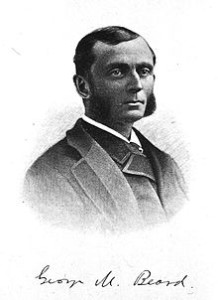Life has always been stressful, so what was it about the nineteenth-century world that increased stress so much that alienists thought it contributed to a rising rate of madness (see last post)? Change itself brings stress, of course, and nineteenth-century humans were experiencing a great deal of change.
As telegraphs, telephones, locomotives, trolleys, and the like infiltrated daily living, it meant that the pace of life picked up for most people. Additionally, the noise level of society rose considerably as machines became more prevalent (even simple changes like clattering typewriters replacing writing by hand in offices). Studies show that constant noise increases levels of cortisol and adrenaline, which then have their own negative consequences on the body.
Not everyone embraced and trusted all the new inventions, either. Doctors diagnosed “elevator sickness” and “railway neurosis” brought on when people experienced the physical novelty and/or stress of using these new technologies. “Dyspepsia,” a term used to describe intestinal troubles of various kinds, was rampant in the nineteenth century–probably as a reaction to stress. Nervousness with life in general sometimes led to “neurasthenia,” a term encompassing feelings of anxiety, depression, irritability, and other symptoms of mental distress.
One of the positive beliefs alienists embraced was that insanity was not an inevitable hereditary condition, as had been previously believed. Instead, they began to believe that certain people were perhaps disposed toward insanity, but that it would only manifest if conditions were right. In the nineteenth century, it appeared that conditions were right for troubling symptoms to appear in many people.













